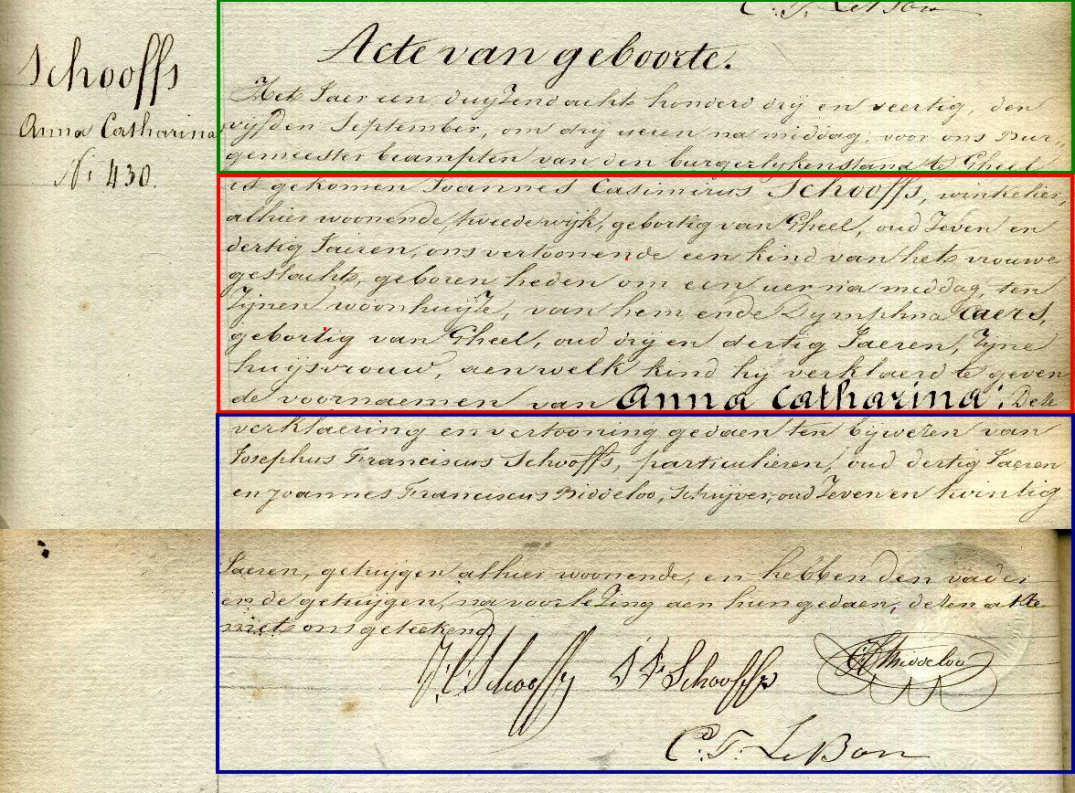|
|
Anatomy of a record in the Civil Registry |
|
After the introduction of the Civil Registry in our country by the French Republic
(in 29 Prairial year IV, or 17 juni 1796), it became compulsory for each municipality
to keep a record of all births, deaths, and marriages that took place under its
jurisdiction. Before that date, only the Church kept records, but these were of
baptisms (not births), marriages, and burials (not deaths). In the beginning, entries
in the Civil Registry did not have a fixed structure and were made in one, or in
three separate registers. Later, printed forms became available, removing the necessity
of having to enter the same phrases over and over again. This resulted in records
with a common layout and contents, making it easier to find information more quickly,
but also making them more understandable to foreign administrations.
Below, we analyse the structure of the civil registry using hand-written records as an example. Elements that are common to all records In general, a record in the civil registry may consist of up to four parts. Not all these parts are necessarily present. They are
In the examples shown below, the header is enclosed by a green box. Typically it contains the following items:
The closing section, shown in blue below, may contain:
The body part of the record is shown in red. Birth record The main part of a birth record contains :
Here is the text of the record, together with an English translation. |

|
Marriage record The major part of a marriage record contains :
|

|
Death record The major part of a death certificate contains :
This information is indicated by the red box on the picture below. Here is the text of the record, together with an English translation. |
